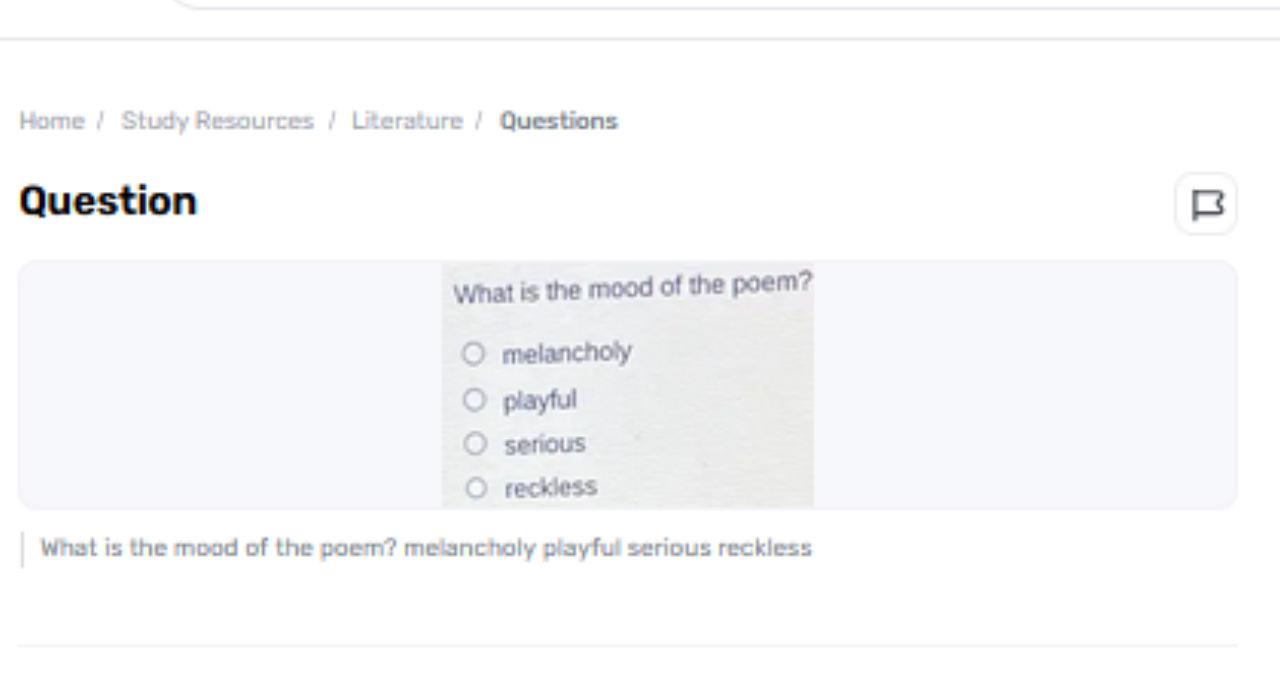Verse, with its bunch of shapes and styles, inspires a range of feelings and dispositions. Understanding the disposition of a lyric is pivotal because it offers more profound experiences into the poet’s expectation and the work’s generally impact. In this dialog, we’ll investigate what is the mood of the poem? melancholy playful serious reckless. By examining various components such as lingual authority, symbolism, tone, and structure, ready to observe the temperament and appreciate the poem’s passionate reverberation.
Analyzing Lingual Authority and Word Choice
Lingual authority, or the poet’s choice of words, plays an essential part in setting the disposition of a lyric. Words carry intentions that can inspire particular feelings. For occurrence, a despairing temperament is frequently passed on through words that suggest pity, yearning, or contemplation, such as “distress,” “loss of hope,” and “forlornness.”
On the other hand, a lively disposition can be demonstrated by light-hearted, unusual, or amusing dialect, utilizing words like “skip,” “gaiety,” and “merriment.” A serious disposition frequently highlights formal, grave, or pensive dialect, whereas a rash temperament might incorporate imprudent, strong, or chaotic expressions. By closely examining the poet’s phrasing, able to accumulate clues about almost the expected temperament.
Looking at Symbolism and Imagery
Symbolism and imagery are effective apparatuses artists utilize to form striking pictures and pass on more profound implications, which in turn influence the poem’s disposition. Symbolism that incorporates dull, somber, or destroyed scenes regularly brings out a despairing temperament. For case, depictions of desolate scenes, blurring light, or cold climates can propose pity or reflection.
Perky symbolism regularly incorporates shining, enthusiastic, and cheerful scenes, such as children playing, colorful gardens, or merry celebrations. Genuine symbolism might center on serious occasions, philosophical reflections, or verifiable stories, though rash symbolism may portray violent occasions, enthusiastic experiences, or wild, uncontrolled settings. Analyzing these components makes a difference in deciding the disposition of the sonnet.
Understanding Tone and Voice
The tone of a lyric, which reflects the poet’s state of mind towards the subject matter, is another pivotal marker of temperament. A melancholic tone is frequently calm, intelligent, and melancholy, whereas a perky tone is light, amusing, and carefree. A genuine tone is ordinarily sincere, conscious, and pensive, and a rash tone can be enthusiastic, insubordinate, or unconstrained. The voice of the lyric, whether it is that of the writer or a persona made by the artist, moreover impacts the disposition. The tone and voice together make an environment that wraps the peruser, directing their enthusiastic reaction to the sonnet.
Considering Structure and Frame
The structure and frame of a lyric, counting its cadence, meter, and stanzaic design, contribute to the by and large disposition. A despairing lyric might have a moderate, consistent beat, with long, streaming lines and a standard meter that inspires a sense of certainty or acquiescence. A perky sonnet frequently highlights unpredictable rhythms, shorter lines, and an unusual or eccentric frame, making a sense of suddenness and fun. Genuine lyrics might follow conventional shapes, such as pieces or tributes, with a formal structure that reflects its gravity. On the other hand, a rash lyric might break ordinary rules, utilizing free verse, sudden line breaks, and an erratic structure to reflect its rash nature. The frame and structure strengthen the mood established by the poem’s substance.
How to Utilize Gauth to Reply Questions
1. Download and Enroll
Introduce the Gauth app from your app store and set up your account.
2. Sign In
Open the app and log in together with your qualifications.
3. Find Questions
Utilize the look or browse highlights to find questions.
4. Submit Your Reply
Sort your reaction and yield it for audit.

Conclusion
Deciding the disposition of a lyric includes a careful analysis of different components, counting phrasing, symbolism, tone, and structure. By examining these components, able to perceive whether the lyric is despairing, perky, genuine, or careless. Each component contributes to the generally enthusiastic scene of the poem, shaping the reader’s encounter and elucidation. Understanding the mood improves our appreciation of the poet’s creation and the poem’s effect, permitting us to put through more profoundly with the work. Through this explanatory approach, we reveal the wealthy enthusiastic layers that verse offers, enhancing our perusing encounter.

